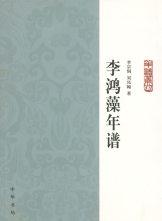
主要责任者: 李宗侗;刘凤翰
责任方式: 著
出版者: 中华书局
出版地: 北京
字数: 500 千字
页码: 1-681
开本: 32
中图分类号: K827=52
装帧: 精
语种:中
定价:78.00
出版时间:2014-01
丛书多卷书否:是
丛书名:年谱丛刊
书目简介:本册工具书是年谱丛刊之一,共收录78条词条。
被引频次:17
| 词条 | 李鸿藻年谱 |
| 类别 | 中文百科知识 |
| 释义 |  主要责任者: 李宗侗;刘凤翰 责任方式: 著 出版者: 中华书局 出版地: 北京 字数: 500 千字 页码: 1-681 开本: 32 中图分类号: K827=52 装帧: 精 语种:中 定价:78.00 出版时间:2014-01 丛书多卷书否:是 丛书名:年谱丛刊 书目简介:本册工具书是年谱丛刊之一,共收录78条词条。 被引频次:17 |
| 随便看 |
开放百科全书收录579518条英语、德语、日语等多语种百科知识,基本涵盖了大多数领域的百科知识,是一部内容自由、开放的电子版国际百科全书。